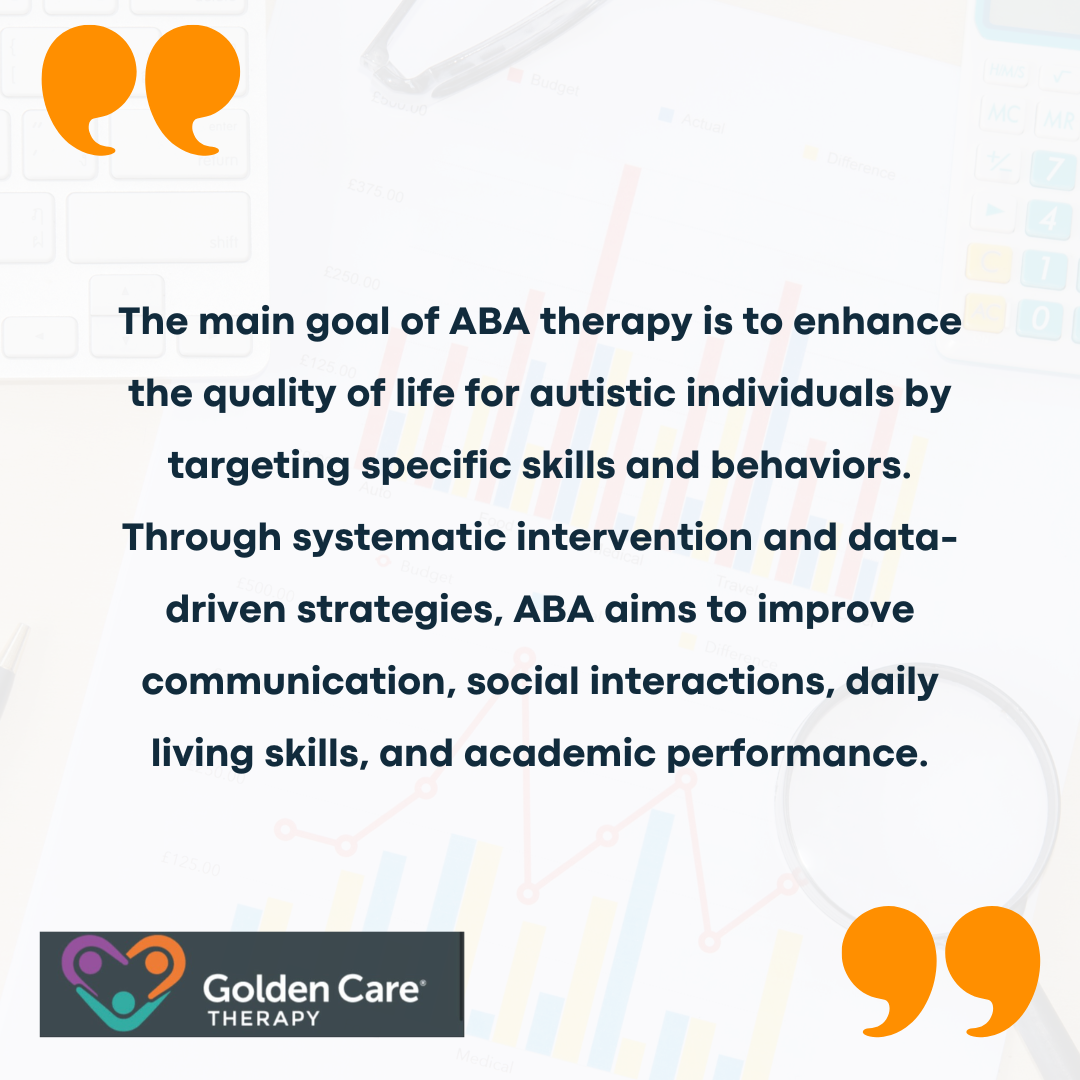
Table of Contents
ABA therapy, or Applied Behavior Analysis, is a well-known approach to helping individuals develop new skills and improve their behavior. It’s especially useful for children with autism or other developmental challenges. By focusing on positive reinforcement and structured techniques, ABA can make a real difference in everyday life.
Understanding specific examples of ABA therapy helps show how it works in real-world situations, giving insight into how small, consistent steps lead to meaningful progress.
These examples demonstrate the wide range of areas ABA can support, from communication and social skills to daily living tasks.
Principles of ABA
ABA therapy is a structured and evidence-based approach used in the treatment of autism. It focuses on identifying and modifying behaviors to improve various skills and behaviors in individuals with autism.
It is rooted in behavioral principles that emphasize the importance of understanding how behaviors are learned and how they can be changed over time. By breaking down behaviors into smaller components, ABA therapists can assess, monitor, and reinforce desired behaviors while reducing undesirable ones.

It is considered the “gold standard” in autism treatment due to its effectiveness in promoting positive outcomes and reducing challenging behaviors.
ABA therapy often involves setting measurable goals, implementing individualized treatment plans, and monitoring progress through data collection and analysis. By utilizing positive reinforcement and evidence-based techniques, ABA therapists work towards strengthening desirable behaviors and reducing problematic behaviors associated with autism.
Types of ABA Therapy
Various approaches can be utilized to address behavioral challenges and promote skill development when considering ABA therapy for autistic individuals.
Let’s take a look at some of the common types of ABA therapy.
Discrete Trial Training (DTT)
Discrete Trial Training (DTT) is a method that breaks down complex skills into smaller, more manageable parts. It involves prompting specific responses from the individual and providing immediate reinforcement for correct answers.
DTT is often used to teach new skills and concepts systematically and repetitively, ensuring consistency in learning outcomes.
Early Intensive Behavioral Intervention (EIBI)
Early Intensive Behavioral Intervention (EIBI) is a comprehensive and intensive form of ABA therapy designed for young children diagnosed with autism. EIBI focuses on providing early, intensive intervention targeting core deficits in communication, social interaction, and behavior.
This approach emphasizes early intervention to maximize the child’s developmental progress and long-term outcomes.
Early Start Denver Model (ESDM)
The Early Start Denver Model (ESDM) is a developmental and relationship-based intervention that incorporates principles of ABA therapy to address the unique needs of young children with autism. ESDM emphasizes naturalistic, play-based interactions to promote language development, social skills, and learning in a natural environment.
This model involves collaboration between parents, caregivers, and therapists to create a supportive and interactive learning environment for the child.
Natural Environment Training
Natural Environment Training (NET) is an ABA therapy approach that focuses on teaching skills within the individual’s natural environment, such as home, school, or community settings.
This approach emphasizes learning in real-life situations. This promotes the generalization of skills across different contexts and increases the individual’s independence and autonomy.
NET allows for more natural and functional skill acquisition by incorporating teaching opportunities into everyday routines and activities.
Each type of ABA therapy intervention offers unique strategies and benefits for individuals with autism, tailored to their specific needs and developmental goals. By selecting the most appropriate approach based on individual strengths and areas of improvement, caregivers and therapists can support individuals with autism in achieving meaningful progress and enhancing their quality of life.
Delivery of ABA Therapy
There are two primary approaches that are commonly utilized in the delivery of ABA therapy.
One is comprehensive ABA therapy which is designed to provide intensive intervention across various environments to address a broad range of behaviors and skills. This approach involves a thorough assessment of the individual’s needs and the development of a comprehensive treatment plan that targets multiple areas of development simultaneously.
Comprehensive ABA therapy aims to create lasting behavioral changes and improvements by implementing strategies consistently across different settings, such as home, school, and community environments.
One of the key features of comprehensive ABA therapy in New Jersey is the individualized nature of the intervention. Treatment plans are tailored to the specific needs and goals of each individual, ensuring that therapy is personalized and impactful.
In addition, progress is continuously monitored and measured to track improvements in behavior, communication, social interactions, and adaptive skills.
The other is focused ABA therapy which concentrates on specific behaviors or situations that require targeted intervention.
This approach is particularly beneficial for addressing isolated behaviors or skill deficits that may hinder an individual’s overall development. Focused ABA therapy involves a more targeted assessment process to identify specific areas of concern and create a focused treatment plan to address those challenges effectively.
Assessment, treatment, and caregiver training are fundamental steps in both comprehensive and focused ABA therapy. Treatment plans are customized to meet the unique needs of each individual, taking into account their strengths, challenges, and learning preferences.
Caregiver training plays a vital role in both approaches as it involves educating parents and family members on implementing behavioral strategies and supporting the individual outside of therapy sessions.
Fundamental Steps in ABA Therapy
As individuals embark on the journey of Applied Behavior Analysis (ABA) therapy, several fundamental steps play a vital role in the effectiveness of the intervention.
These steps include assessment in ABA, treatment, and caregiver training. Let’s look at them in further detail.

Assessment
Assessment is a key component of ABA therapy, employing behavioral principles to establish goals, reinforce positive behaviors, and gauge progress.
The assessment process in ABA therapy involves an in-depth analysis of the individual’s behaviors and needs to tailor a personalized treatment plan. By identifying strengths and areas for growth, therapists can develop interventions that target specific skills and behaviors.
This phase serves as the foundation for creating effective and individualized treatment strategies.
Treatment
Caregiver Training
Another essential aspect of ABA therapy is caregiver training, where parents and family members are equipped with essential skills and strategies to reinforce positive behaviors and maintain progress outside of therapy sessions. Caregiver training ensures continuity of learning and behavior management beyond the therapy setting.
Caregiver training sessions provide families with tools and resources to support the implementation of behavior management techniques at home. By empowering caregivers with knowledge and strategies, ABA therapy extends its impact on the individual’s daily life, promoting consistency in behavior support and skill development.
Through comprehensive assessment, tailored treatment approaches, and caregiver training, ABA therapy creates a holistic framework that promotes positive outcomes for individuals on the autism spectrum.
Integrating these fundamental steps makes it possible for ABA therapy to enhance skills, reduce challenging behaviors, and foster independence in individuals receiving treatment.

The Bottom Line
ABA therapy offers a variety of techniques that can make a big difference in the lives of individuals with autism. Whether it’s through positive reinforcement, teaching everyday skills, or breaking tasks into manageable steps, these examples show how ABA can be tailored to meet unique needs.
Understanding these approaches allows parents and caregivers to better support progress and celebrate the small victories along the way. For families seeking ABA therapy in New Jersey, Indiana, Georgia, and New York, Golden Care Therapy offers personalized services to meet your child’s unique needs. Contact us today to learn more and begin your journey toward meaningful progress.
Sources:
- Video Modeling and Its Impact on ABA Learning - September 27, 2024
- Strategies for Teaching Turn-Taking in Autism - September 27, 2024
- Understanding Social Boundaries in Autism - September 27, 2024
